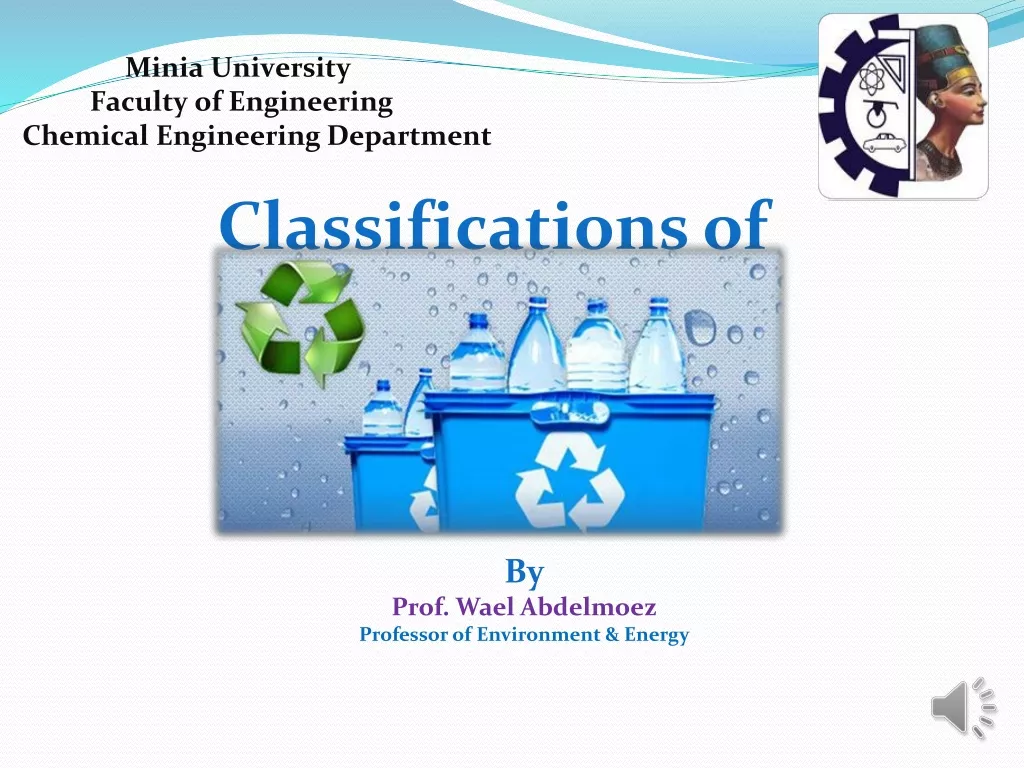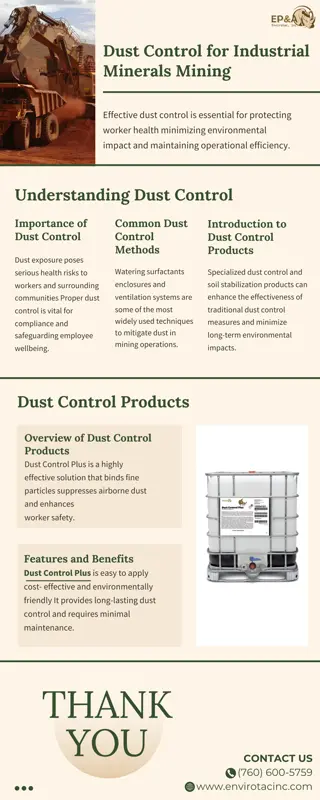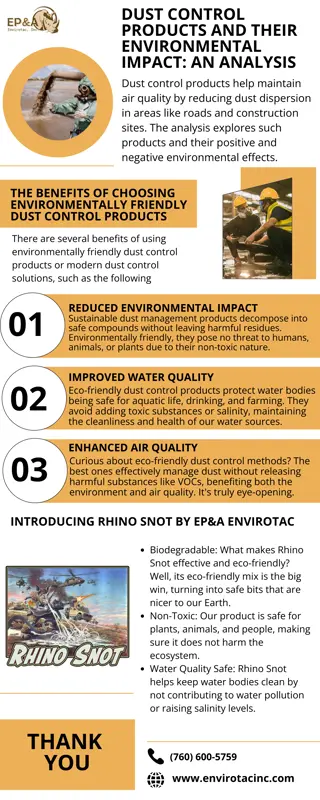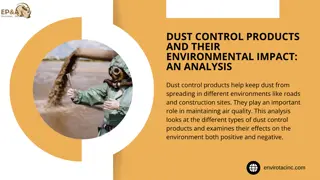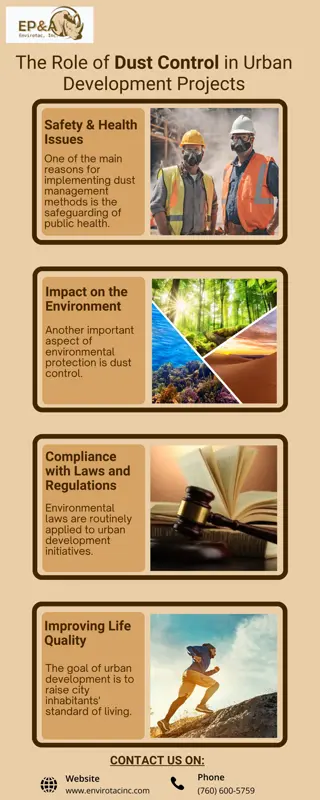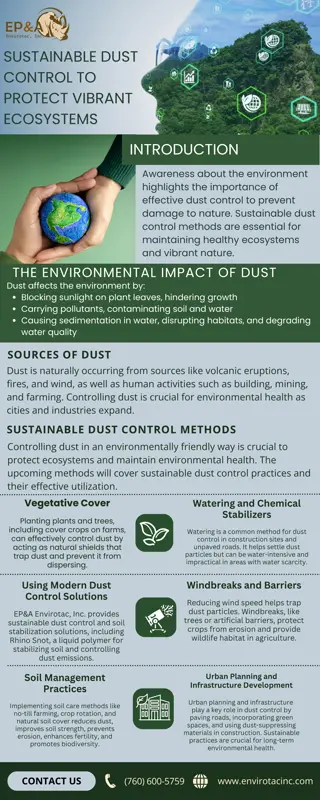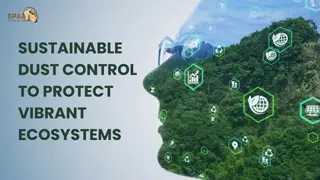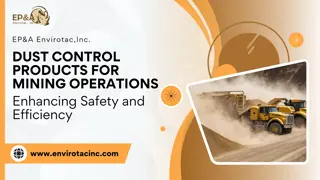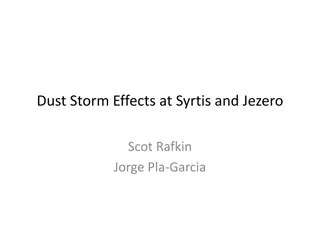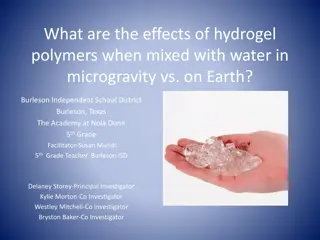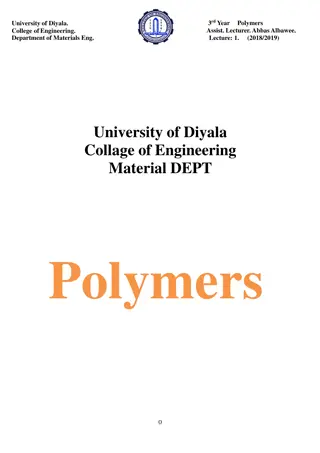
Understanding the Environmental Impact of Dust Control Polymers
Dust control polymers bind dust particles, reducing air pollution and water use while preventing soil erosion, offering an eco-friendly solution for various industries.n
Download Presentation

Please find below an Image/Link to download the presentation.
The content on the website is provided AS IS for your information and personal use only. It may not be sold, licensed, or shared on other websites without obtaining consent from the author. If you encounter any issues during the download, it is possible that the publisher has removed the file from their server.
You are allowed to download the files provided on this website for personal or commercial use, subject to the condition that they are used lawfully. All files are the property of their respective owners.
The content on the website is provided AS IS for your information and personal use only. It may not be sold, licensed, or shared on other websites without obtaining consent from the author.
E N D
Presentation Transcript
UNDERSTANDING THE ENVIRONMENTAL IMPACT OF DUST CONTROL POLYMERS www.envirotacinc.com
INTRODUCTION Dust management has been very critical in industries like construction, mining, and agriculture, and now also in growing urban development. Uncontrolled dust can cause serious environmental and health problems; therefore, dust control products are very necessary. In this respect, dust control polymers have brought innovation to this field by providing effective dust suppression without much harm to the environment. This blog explores the ecological impact of dust control polymers and how they contribute to sustainable practices.
WHAT ARE DUST CONTROL POLYMERS Dust control polymers are a class of chemical compounds designed to bind dust particles together, making them heavy enough to remain suspended in the air. They are used on land, roads, and any other places where the generation of dust has proved to be a problem. Unlike the traditional methods of dust control, which include water spraying, Dust-control Polymer works for a very short time; it gives superior durability. The creation of a stable and cohesive layer over the treated surface ensures long-term dust suppression.
ENVIRONMENTAL BENEFITS OF DUST CONTROL POLYMERS REDUCE WATER CONSUMPTION MINIMIZE PARTICULATES IN THE AIR PREVENTION OF SOIL EROSION Airborne dust particles are, therefore, a significant source of air pollution and may further cause serious health problems for humans and animals. Dust control polymers decrease dust quantities by preventing them from getting airborne, consequently improving the quality of air. The reduction in airborne particulates relieves respiratory problems and other resulting from the inhalation of dust. Traditional dust control methods, like frequent spraying with water, consume vast quantities of the resource. Besides being profligate, this is not viable in the arid regions of the world where lack of water poses a serious life challenge. In contrast, dust control polymers need very little water for their application and maintenance, thus saving a great deal of this resource. It problem degradation involves the loss of fertile topsoil. polymers prevent stabilizing the soil, hence staying healthy and fertile. This is quite critical in agricultural where the fertility of the soil is a prime factor in crop production. is a serious environmental because land Dust-control erosion by settings health hazards
DURABILITY AND LONGEVITY ENVIRONMENTAL IMPACT CONSIDERATIONS Though dust control polymers have many ecological advantages, one must look at the holistic effect. One needs to evaluate the composition of the polymers and their interaction with the environment, which shouldn't introduce any substances that are harmful to the soil or the water systems. The application techniques and responsible use will ensure maximizing the benefits while minimizing negative effects. Because dust control polymers are long-lasting, fewer applications are required over time. reduces the frequency of treatment and, thereby, the footprint of frequent applications. The durability of the polymers further ensures less disturbance to the environment, as remain stable for a very long period. This further environmental treated areas
CASE STUDIES: POSITIVE ENVIRONMENTAL IMPACT CONSTRUCTION SITES In dust-generating areas such as construction sites, the application of dust control polymers has achieved outstanding improvements in air quality. For example, on a large California construction project, the implementation of soil dust control products caused a reduction of 75% in airborne dust particles. This not only enhanced working conditions for laborers but also made it easier for the community at large by reducing the levels of pollution.
MINING OPERATIONS Mining processes are known to generate high levels of dust, which is potentially highly damaging to the environment and human health. The use of quality control products, such as dust control polymers, has reduced dust emissions from Australian mining sites significantly. This has resulted in improved air quality and less potential environmental impact from mining activities.
AGRICULTURAL FIELDS Soil health is very critical in farming. Dust control products, more so dust control polymers, ensure the soil is stable and not easily eroded. One case study from Texas reported the farms where the application was noted had a 40% reduction in soil erosion, hence resulting in better crops and healthier soils.
FUTURE TRENDS OF DUST CONTROL Research in dust control polymers focuses on developing environmentally friendly and effective options, including biodegradable polymers. Custom dust control solutions for various soils and weather conditions are gaining importance, with advancements in polymer technology expected to improve environmental benefits.
THANK YOU FOR YOUR ATTENTION (760) 600-5759 www.envirotacinc.com


